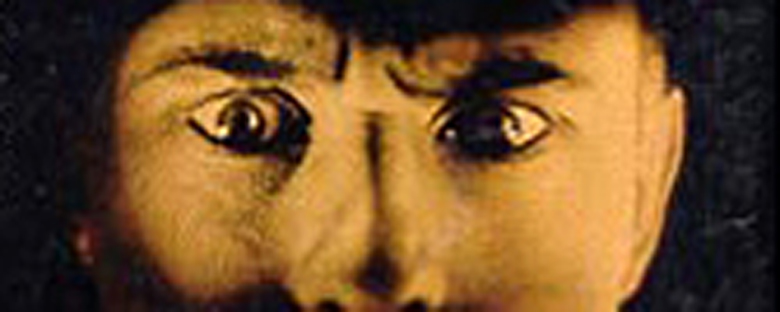Reviews
F. W. Murnau
Germany, 1926
Credits
Review by Matt Bailey
Posted on 19 December 2004
Source Masters of Cinema/Eureka! DVD
Attentive and devoted readers might remember that I read Molière for fun in high school. On the bus, even. When I got to college, one of the first things I did was head to the library and check out a copy of his plays. In French. Yes, I am that much of a nerd. What became of my little obsession with Monsieur Poquelin? Not much, I’m afraid. I became an English major and became obsessed with James Joyce instead (and then a grad student in film, but that’s another sad story). But my discovery of Molière at such a formative and exceptionally awkward time of my life instilled in me a robust contempt for the absurdity and pettiness of maintaining bourgeois respectability, which, after all, is the theme of much of his work. His plays are full of characters striving tirelessly to uphold images of (variously) piety, wealth, culture, marital harmony, or wisdom, meanwhile weakening that image in their very obstinacy and lack of awareness of the world around them. Tartuffe is one of Molière’s most memorable inventions—the scheming interloper who feigns an alluring holiness in order to bilk his bourgeois followers out of their fortunes.
It may seem odd that Murnau, the director of such large-scale, fantastic visions as Sunrise, Nosferatu, and Faust would turn his talents toward what is, by design, a chamber piece with few characters and even fewer opportunities for stylistic flights of fancy. Indeed, Murnau directed the film at the behest of his friend and frequent collaborator, Emil Jannings. Tartuffe is far from being a work for hire, however. Murnau controlled every aspect of the production, from the set design to the script. Even though a complete and, in Murnau’s estimation, excellent adaptation had been written by Carl Mayer, Murnau adjusted every line to his liking, making minor alterations here, major scene changes there.
Murnau was wise enough to realize that silent cinema had no capacity to do justice to the acid wit of Molière’s flawless alexandrines (not a single line from the play remains intact in the film), so he made a special effort to ensure that the satiric humor was translated visually. This is accomplished through sprightly editing, comedic use of extreme close-ups, sight gags, and the arch performance (occasionally tipping over into hamminess) of Emil Jannings. As a Molière purist, I am surely biased, but the translation is not always successful. Indeed, the contemporary review from Variety felt that the film’s “French humor, seen through German eyes, and finally placed before the American public, [was] bound to suffer in the process.” The film is perhaps more true to the spirit of the French comic than it is to the letter of his play. While more than half of the original characters (not to mention the plot) are stripped away in the process of adaptation, the film incorporates touches Molière most certainly would have smiled upon: the use of direct address to the audience, disguises, an profusion of obsequious and altogether insincere flattery, and a traveling entertainer (among others).
While the film is arguably minor Murnau, it remains highly agreeable and full of the director’s characteristic visual inventiveness, albeit on a smaller scale. There are no majestic flights through the night sky or tour-de-force tracking shots, but there are moments of visual brilliance such as the shot of the old man rocking in his chair, seemingly threatening to burst through the screen, or the view down a hallway from the point of view of a pair of shoes. There is also one instant of breathtaking exquisiteness when the tears of Mme. Elmire, crying at what she fears is the loss of her husband to religious fanaticism, fall one by one onto her miniature portrait of him.
I rarely indulge in mentioning DVD special features in what is meant to be (or at least simulates) film criticism, but a short documentary included on the Masters of Cinema/Eureka! release of Tartuffe (which does not appear on the American DVD release through Kino) is worth a note. Supplementary material on DVDs, particularly those of films by directors considered great masters of the medium, can often tend toward the fawning and vapid—puff pieces intended to remind you just how lucky you are to be watching such a great film and shouldn’t you be proud of yourself for having such good taste. The documentary on the Tartuffe disc is, shockingly, about the film itself: its production history and, most interestingly, its physical history as a piece of cinema. Four versions (and none of the negatives) of the film exist, yet none are considered complete. The documentary not only informs the viewer of this fact, but proceeds to compare all of the versions and explains (in detail) the differences. It is a supplement in the truest sense of the word: something that completes, supports, and strengthens the whole.
Most movie fans, even fans of silent film, could probably survive without seeing Tartuffe, but those interested in the work of F. W. Murnau (and if you are not, you really should reconsider) or in film preservation would be well-served by seeking out this presentation of one of the director’s less-celebrated works.
We don’t do comments anymore, but you may contact us here or find us on Twitter or Facebook.



